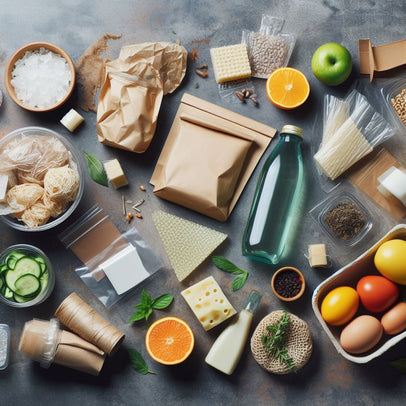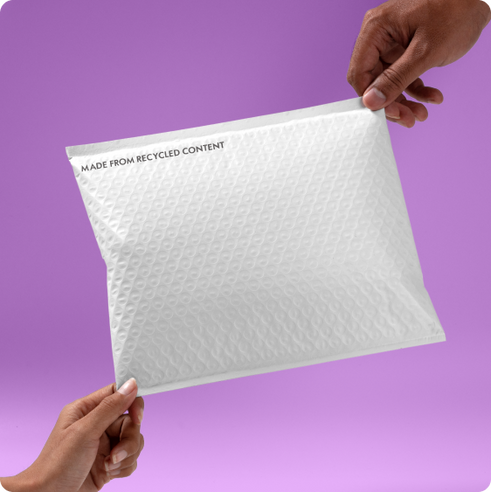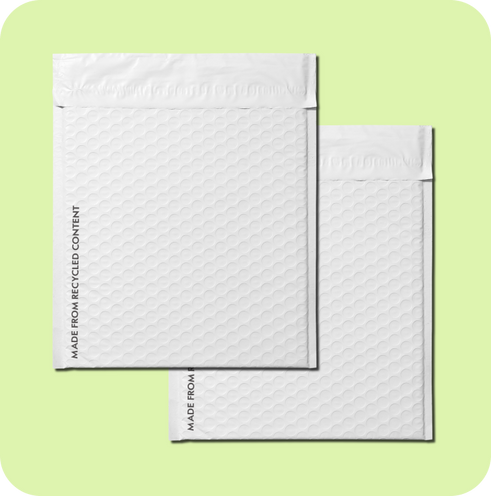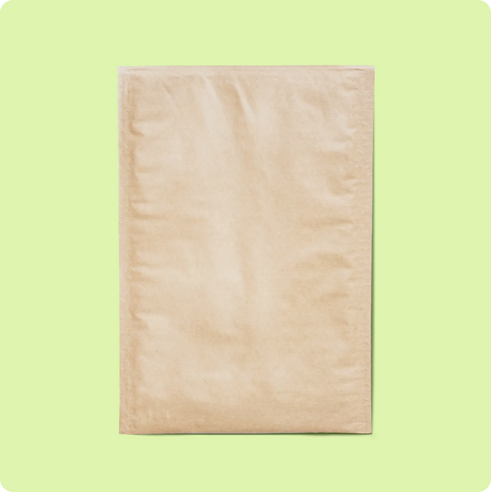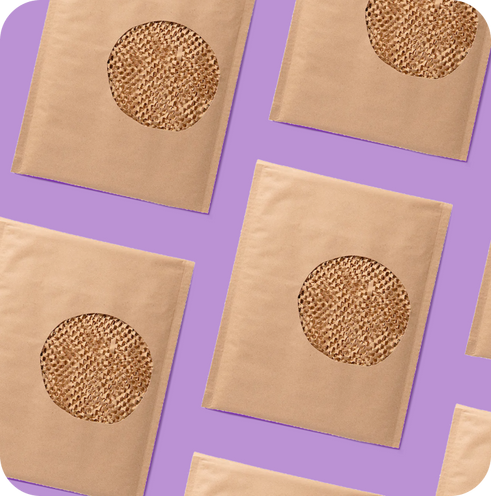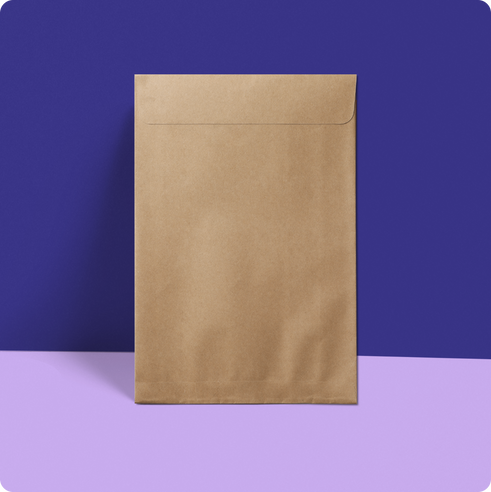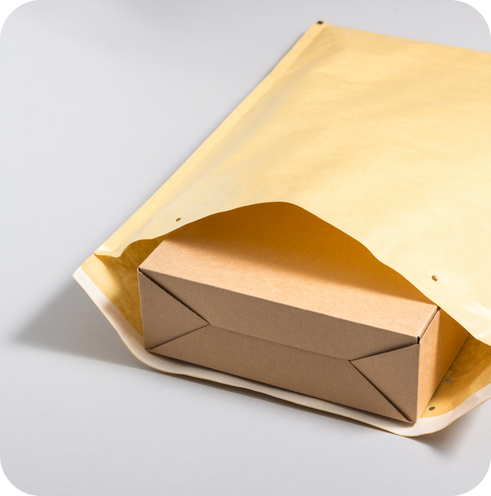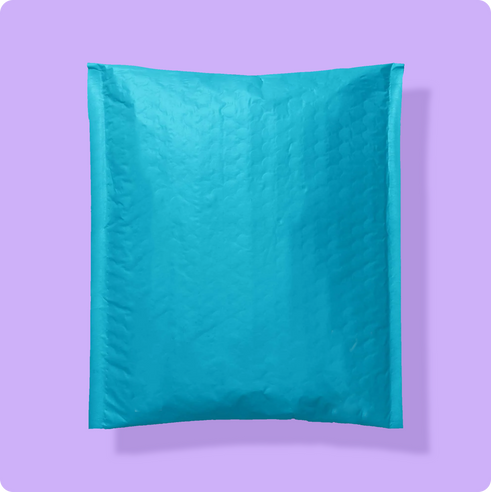Packaging 101: The Complete Guide
- Packaging 101
- Types of Packaging
- Aseptic Packaging
- Blister Packaging
- Biodegradable Packaging
- Bulk Packaging
- Carbon Neutral Packaging
- Circular Packaging
- Clamshell Packaging
- Compostable Packaging
- Cornstarch Packaging
- Corrugated Packaging
- Discreet Packaging
- Ecommerce Packaging
- Flexible Packaging
- Frustration Free Packaging
- Retail Packaging
- Secondary Packaging
- Smart Packaging
- Sustainable Packaging
- What is a PR Package?
- What is a Poly Mailer?
- Packaging Design Ideas
- AI Packaging Design
- Bakery Packaging Ideas
- Bath Bomb Packaging Ideas
- Bath Salt Packaging Ideas
- Body Butter Packaging Ideas
- Body Oil Packaging Ideas
- Body Scrub Packaging Ideas
- Brownie Packaging Ideas
- Cake Packaging Ideas
- Cake Pop Packaging Ideas
- Candle Packaging Ideas
- Candy Packaging Ideas
- Canva Packaging Design
- Chocolate Packaging Ideas
- Cinnamon Roll Packaging Ideas
- Clothing Packaging Ideas
- Coaster Packaging Ideas
- Coffee Bag Design Ideas
- Cookie Packaging Ideas
- Cosmetics Packaging Design
- Cotton Candy Packaging Ideas
- Cupcake Packaging Ideas
- DIY Packaging Ideas
- Dog Treat Packaging Ideas
- Food Packaging Ideas
- Empanada Packaging Ideas
- Etsy Packaging Ideas
- French Fries Packaging Ideas
- Frozen Food Packaging Ideas
- Hair Extension Packaging Ideas
- Handbag Packaging Ideas
- Jewelry Packaging Ideas
- Keychain Packaging Ideas
- Lash Packaging Ideas
- Lip Gloss Packaging Ideas
- Macaron Packaging Ideas
- Minimalist Packaging Ideas
- Mug Packaging Ideas
- New Employee Welcome Kit Ideas
- Packaging Colors
- Packaging Inserts Ideas
- Packaging Logo Design
- Packaging Typography
- Perfume Box Design Ideas
- Pizza Box Design Ideas
- Popcorn Packaging Ideas
- Scarf Packaging Ideas
- Skincare Packaging Design Ideas
- Soap Packaging Ideas
- Sock Packaging Ideas
- Sticker Packaging Ideas
- Sunglass Packaging Ideas
- Sustainable Packaging Ideas
- Tea Packaging Ideas
- Wax Melt Packaging Ideas
- Weed Packaging Ideas
- T-Shirt Packaging Ideas
- Wine Packaging Design Ideas
- What is a Packaging Engineer?
- Types of Packaging Materials
- Chipboard vs Cardboard
- Compostable Packaging Materials
- Alternatives to Plastic Packaging
- Edible Packaging Materials
- Food Packaging Materials
- Are Poly Mailers Recyclable?
- How to Recycle Cardboard Boxes
- How to Recycle Packaging Materials
- Medical Device Packaging Materials
- Mono Material Packaging
- Pharmaceutical Packaging Materials
- Plastic Food Packaging
- Protective Packaging Materials
- Reusing Packaging Materials
- Types of Packaging Foam
- Void Fill Packaging
- What is Chipboard?
- What is Kraft Paper?
- Offset vs Digital Printing
- RGB vs CMYK Printing
- Screen Printing vs Digital Printing
- Screen Printing vs Sublimation
- What is a Dieline in Packaging?
- What is Die Cutting?
- What is Digital Printing?
- What is Flexographic Printing?
- What is Glassine Paper?
- What is Offset Printing?
- What is Spot UV Printing?
- Why is 300 DPI Good for Printing?
- How to Estimate Shipping Costs
- How to Pack Glass for Shipping
- How to Mail a Bubble Mailer
- How to Make a Shipping Label
- How To Measure Box Dimensions and Sizes
- How to Ship Alcohol
- How to Ship Artwork
- How to Ship Books
- How to Ship a Cake
- How to Ship Candles
- How to Ship Chocolate
- How to Ship Clothes
- How to Ship Cookies
- How to Ship Food
- How to Ship a Hat
- How to Ship Jewelry
- How to Ship a Laptop
- How to Ship Perfume
- How to Ship a PC
- How to Ship Perishable Food
- How to Ship Plants
- How to Ship Shoes
- How to Ship Vinyl Records
- Packaging Symbols
- Shipping Large Items
- What is a Delivery Exception?
- What is Shipping Insurance?
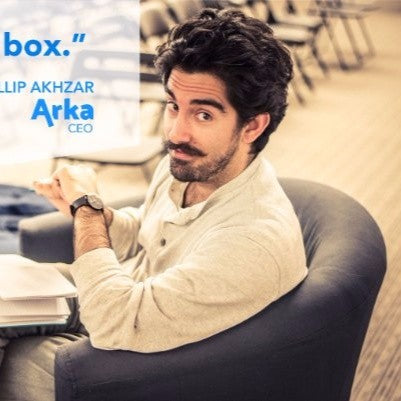
Discover Phillip Akhzar’s journey, the Founder and CEO of Arka, bringing 16 years of expertise in packaging and supply chain logistics. Read more on Arka.
Why We Need Alternatives to Plastic Packaging
The surge in plastic packaging is harming our environment, filling up landfills and water bodies, endangering animals, and adding to climate change. Hence, finding alternatives to plastic food packaging is crucial now.
Plastic packaging is liked because it's tough, light, and can be used in many ways. But this toughness causes a big problem for nature. Plastic takes hundreds of years to break down, filling our land and seas. This slow breakdown means plastic waste piles up, making our environment look bad and hurting sea life.
The big issue with plastic packaging is how it fills up our garbage dumps. These dumps show how much we depend on plastic. And plastic doesn't just stay there; it often ends up in our rivers and oceans, hurting animals living there.

Plastic hurting sea life is a serious problem. Sea animals, like turtles and birds, eat plastic bits, which hurts them a lot and can even kill them. Also, sea creatures can get stuck in plastic, and that's deadly too. Seeing animals suffer is sad and shows we urgently need other options instead of plastic packaging.
Making plastic packaging also uses a lot of energy and makes greenhouse gases. Getting the oil for plastic releases harmful stuff in the air. Finding alternatives to plastic packaging can reduce these gases and help stop climate change.
Benefits of Sustainable Alternatives To Plastic Packaging
As a response to this global issue, industries have been exploring various alternatives to plastic packaging. These alternatives not only address environmental concerns but also offer a multitude of benefits to businesses and consumers alike.
• Reduced environmental impact: one of the most significant advantages of adopting alternatives to plastic packaging is the reduced environmental impact. Conventional plastic lingers for centuries, polluting oceans and landscapes. In stark contrast, packaging made from natural elements like seaweed and plant starch swiftly disintegrates, curbing the enduring impact of plastic waste.
• Improved brand image: companies embracing sustainable packaging not only resonate positively with their clientele but also champion the environment. Today's consumers favor eco-conscious brands, fostering loyalty. By adopting these green alternatives to plastic packaging, businesses manifest their dedication to Earth's preservation, bolstering their image and customer allegiance.

• Innovation and creativity: this shift towards alternatives to plastic packaging has propelled inventive strides in the packaging realm. Think edible wrappings for edibles and compostable materials for sundry items. These innovations, while eco-friendly, underscore the industry's adaptability and inventiveness in confronting packaging challenges.
• Cost-Effective Solution: surprisingly, sustainable packaging isn't just a boon for the environment; it's financially astute too. Technological progress and rising demand for eco-materials have slashed production costs. Furthermore, businesses trim expenses on disposal and recycling. In essence, the switch to alternative plastic packaging makes compelling economic sense in the long term.
Challenges in Adopting Packaging Alternatives to Plastic
Industries face a cost challenge when seeking alternatives to plastic packaging. Sustainable materials often cost more, deterring businesses, especially smaller ones. Limited options matching plastic's versatility hinder adoption, especially for perishable goods. Developing viable alternatives requires research and tech advancements, slowing adoption.
Government regulations and initiatives play a pivotal role in encouraging the shift away from plastic packaging. Regulatory measures such as imposing taxes on single-use plastic items and offering incentives for businesses adopting eco-friendly alternatives to plastic packaging, motivate industries to explore sustainable options. Additionally, awareness campaigns and collaborations between governments and businesses raise consciousness about the importance of adopting environmentally friendly practices.
12 Promising Alternatives to Plastic Packaging
Plastic packaging has long been a convenient solution for preserving and transporting products; However, the environmental impact of plastic waste has led to a quest for sustainable alternatives. But what are the alternatives to plastic packaging? Here, we explore the most promising packaging alternatives to plastic that are making waves across various industries.
Paper Packaging
Paper packaging emerges as a versatile and sustainable substitute for plastic, with applications ranging from boxes to bags. Its popularity in food packaging materials stems from its eco-friendly qualities, including recyclability and biodegradability, making it a top choice for environmentally conscious consumers and a great alternative to plastic food packaging.


Glass Packaging
Glass, with its timeless charm, serves as one of the most robust alternatives to plastic bottle packaging and finds extensive use in beverages, sauces, and cosmetics. What sets it apart is its 100% recyclability without any loss in quality. Its transparent nature allows consumers to admire the product, adding to its visual appeal and making it one of the best alternatives to plastic packaging for food.

Metal Packaging
Metal packaging, encompassing aluminum and steel, guarantees durability and the preservation of product freshness. Commonly employed for canned goods and beverages, metals are infinitely recyclable. Their resistance to high temperatures renders them suitable for various food products.

Biodegradable Packaging
Biodegradable packaging materials naturally decompose, reducing their environmental impact. Sourced from plant starches or sugarcane, these materials break down over time, making them an excellent alternative to single-use plastic packaging items such as cutlery and plates.

Plant-Based Packaging
Plant-based plastics, also known as bioplastics, originate from renewable resources like cornstarch or sugarcane. These plastics imitate traditional plastics but carry a smaller carbon footprint. They are gaining ground in numerous sectors, including food packaging.

Cloth and Fabric Packaging
Cloth and fabric packaging offers a reusable and stylish replacement for plastic bags. These materials are not only eco-friendly but also customizable, making them favored choices for boutique stores and eco-conscious shoppers.


Beeswax Wraps
Beeswax wraps present a natural alternative to plastic packaging and foils. Crafted from cotton infused with beeswax, these wraps are pliable and can be shaped to cover food items, preserving their freshness. They are washable and reusable, embodying a sustainable choice for food storage.

Edible Packaging
Edible packaging materials mark an innovative approach to packaging. Made from edible materials, these packages can be consumed along with the product, completely eliminating waste. In the food industry, edible packaging revolutionizes how we perceive packaging materials, particularly for snacks, condiments, and sweets.

Mushroom Packaging
Mushroom packaging, or mycelium packaging, is formed using fungal mycelium and agricultural waste. This natural and biodegradable material is employed for protective packaging, ensuring the safety of delicate items during transportation. Once discarded, it decomposes swiftly without harming the environment.

Compostable Packaging
Compostable packaging breaks down into natural elements without leaving any toxic residues. Produced from organic materials like cornstarch, these packages are designed to decompose in composting facilities, making them a conscientious choice for various products and a better alternative to plastic packaging.

Cardboard and Carton Packaging
Cardboard and carton packaging serve as classic yet effective replacements for plastic. Easily recyclable and biodegradable, they find wide application in packaging cereals, beverages, and electronic devices. Their versatility and eco-friendly nature make them indispensable in the packaging industry.

Jute and Hemp Packaging
Jute and hemp packaging are natural fibers that are robust, durable, and biodegradable. These materials are widely used for bags, sacks, and even clothing. Jute and hemp packaging not only offer sustainable alternatives to plastic packaging but also support rural economies where these crops are cultivated.

How to Make The Switch as a Business: 3 Tips
Tip #1: Begin by understanding your current packaging materials and what you aim to achieve. Examine your existing plastic packaging, considering the products, shelf life, and distribution methods. Are there specific rules your products must follow? Knowing your unique needs and sustainability goals is the first step to finding the right solution.
Tip #2: Once you know your needs, explore sustainable alternatives. There are various options beyond plastic, such as biodegradable and compostable materials. These not only help the environment but also meet the demand for eco-friendly products. Consider costs, performance, and environmental impact when researching. Collaborate with suppliers specializing in sustainable packaging for informed decisions; Be ready for potential adjustments in production or supply chain.
Tip #3: Moving away from plastic doesn’t have to be sudden. Plan a gradual shift; Test sustainable materials on a small scale, like specific products or regions. This helps identify challenges before a full switch. Communicate the plan clearly with your team. Also, inform customers about the change and its environmental benefits. Transparent communication builds trust and showcases your dedication to sustainability.
Brands Embracing Packaging Alternatives to Plastic
Lush Cosmetics has revolutionized packaging with their innovative naked packaging approach, eliminating plastic containers and reducing their environmental impact. Their shampoo bars, bath bombs, shower gels are showcased without plastic wrap, encouraging eco-conscious choices without compromising quality.
In the tech accessory world, Pela Case leads the way with stylish phone cases made entirely from biodegradable materials; These cases provide excellent device protection and naturally decompose, leaving no harmful residue. Choosing Pela Case contributes to a plastic-free future while responsibly safeguarding gadgets.
Final Thoughts
Embarking on the path of eco-consciousness, Arka lights the way to a sustainable tomorrow. Our voyage into alternatives to plastic packaging not only brightens the future but also nurtures our Earth. By choosing these green options, we unite in an effort to diminish plastic pollution and safeguard our planet. Each decision in favor of these alternatives propels us toward a world that's purer, verdant, and more robust, ensuring a healthier legacy for the generations yet to come.
At Arka, we specialize in guiding businesses on their eco-friendly packaging odyssey. With our expertise, we aid companies in discovering sustainable substitutes for their products. Our devoted team is steadfast in aiding your company's transition to environmentally aware choices. You can check out our eco-friendly custom mailer boxes or shipping boxes. We guarantee that your packaging not only shields your products but also conserves our cherished planet. Join forces with us and be the change-makers for a better world.
FAQs on Alternatives to Plastic Packaging
Are sustainable packaging options as durable as plastic?
Yes, many sustainable options are designed to be as durable as plastic.
Can sustainable packaging options replace all plastic packaging?
While they can replace many plastic items, some specialized uses might still require plastic, but ongoing innovations are expanding alternatives.
